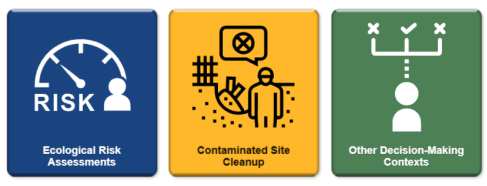Ecosystem Services Tool Selection Portal
EPA’s Ecosystem Services Tool Selection Portal is a resource to help communities incorporate the benefits of local ecosystems into their environmental planning and decision-making.
About the Portal

The EPA Ecosystem Services Tool Selection Portal helps users select the best ecosystem services assessment tools for their unique scenario. While each tool is designed for a particular purpose, having access to information about a suite of potential tools can be insightful.
There are a variety of ways to connect ecosystem services to a given environmental decision-making context or process.

In order of complexity (from least to most complex) strategies range from:
- Using best professional judgment.
- Finding examples from other efforts to apply.
- Testing individual tool applications.
- Using a systematic, decision-tree approach to navigate among potentially relevant ecosystem services tools and frameworks relevant to that decision-making process.
EPA has developed a decision-tree approach to help users choose from a suite of ecosystem services assessment tools for three decision contexts, including:
- Ecological risk assessments.
- Cleanup of contaminated sites.
- Other (generic) structured decision-making processes.
Learn more in The EPA Ecosystem Services Tool Selection Portal, published in a special issue of the journal Sustainability dedicated to sustainable management and remediation of contaminated sites. Citation: Harwell, M., L. Sharpe, K. Hines, C. Schumacher, S. Kim, G. Ferreira, AND Tamara Newcomer Johnson. The EPA Ecosystem Services Tool Selection Portal. Sustainability. MDPI, Basel, Switzerland, 16(5):1739, (2024).
Who Should Use the Portal
EPA’s Ecosystem Services Tool Selection Portal has three paths intended for professionals involved with:
- Ecological risk assessments.
- Contaminated site cleanup.
- Other decision-making contexts, including natural resource management, park and recreation planning, habitat restoration, and stormwater management.
Benefits of Using the Portal
It can be challenging for risk assessors or contaminated site cleanup practitioners to figure out the best ecosystem services assessment tool(s) to utilize. The Ecosystem Services Tool Selection Portal provides users with a clear path forward when deciding which tool is best for their specific needs.
Tools described within the Portal include:
- National Ecosystem Services Classification System (NESCS) Plus
- Final Ecosystem Goods and Services (FEGS) Metrics Report
- Final Ecosystem Goods and Services (FEGS) Scoping Tool
- EnviroAtlas
- EcoService Models Library
- EcoHealth Relationship Browser
- EPA H2O Tool
- Practical Strategies for Integrating Final Ecosystem Goods and Services into Community Decision-Making Report
- Rapid Benefits Indicators Approach
- Visualizing Ecosystem Land Management Assessments (VELMA) Model
- Causal Analysis/Diagnosis Decision Information System (CADDIS)
While a background in ecosystem services could be helpful, the language in the Portal is clear and concise so that a wide range of users are able to follow the steps. Risk assessors, contaminated site practitioners, or others interested in environmental decision-making can review results from the Portal to learn about various tools that pertain to their specific criteria.
User Manual:
Technical Contacts:
- Matt Harwell, Harwell.Matthew@epa.gov
- Tammy Newcomer-Johnson, Newcomer-Johnson.Tammy@epa.gov
- Leah Sharpe, Sharpe.Leah@epa.gov
